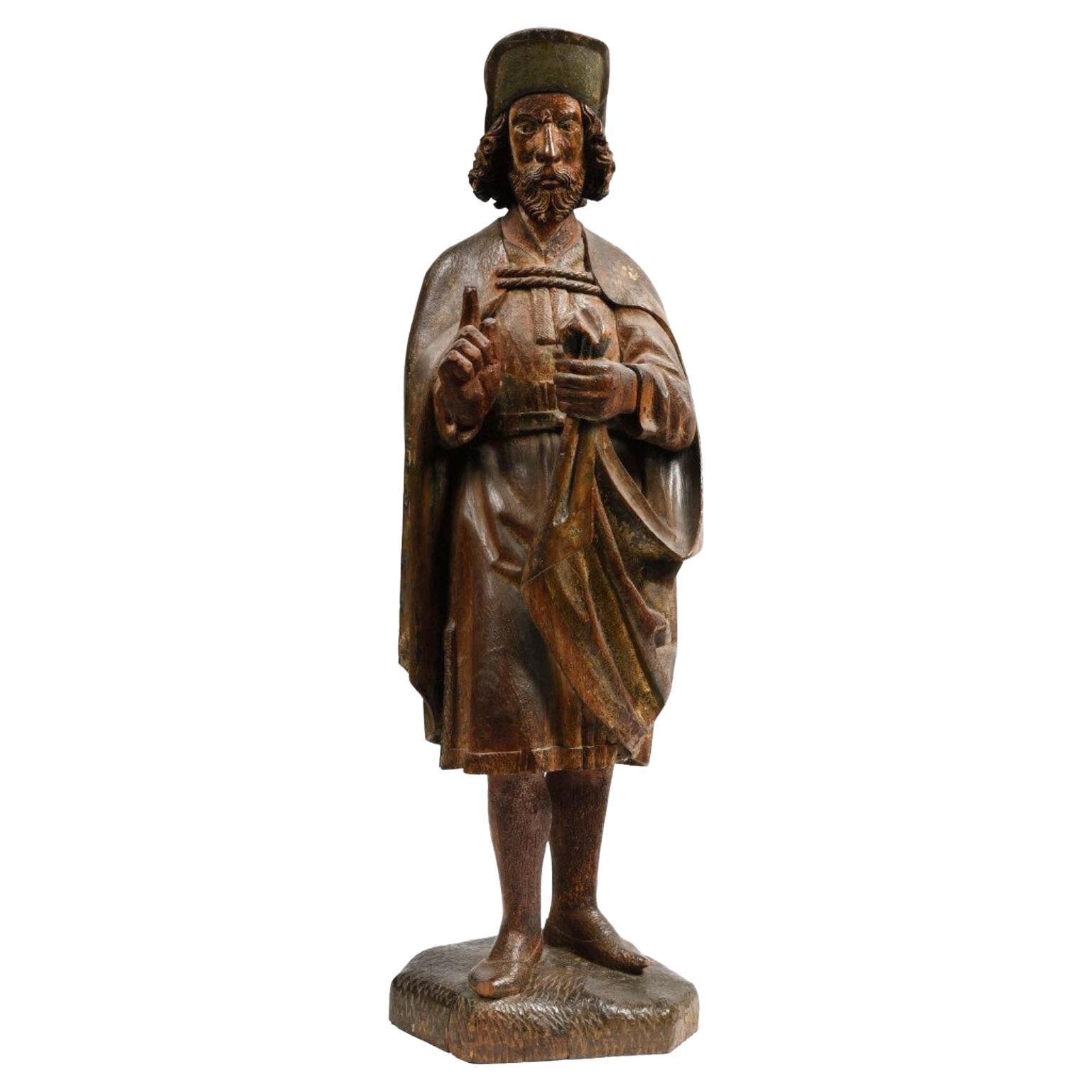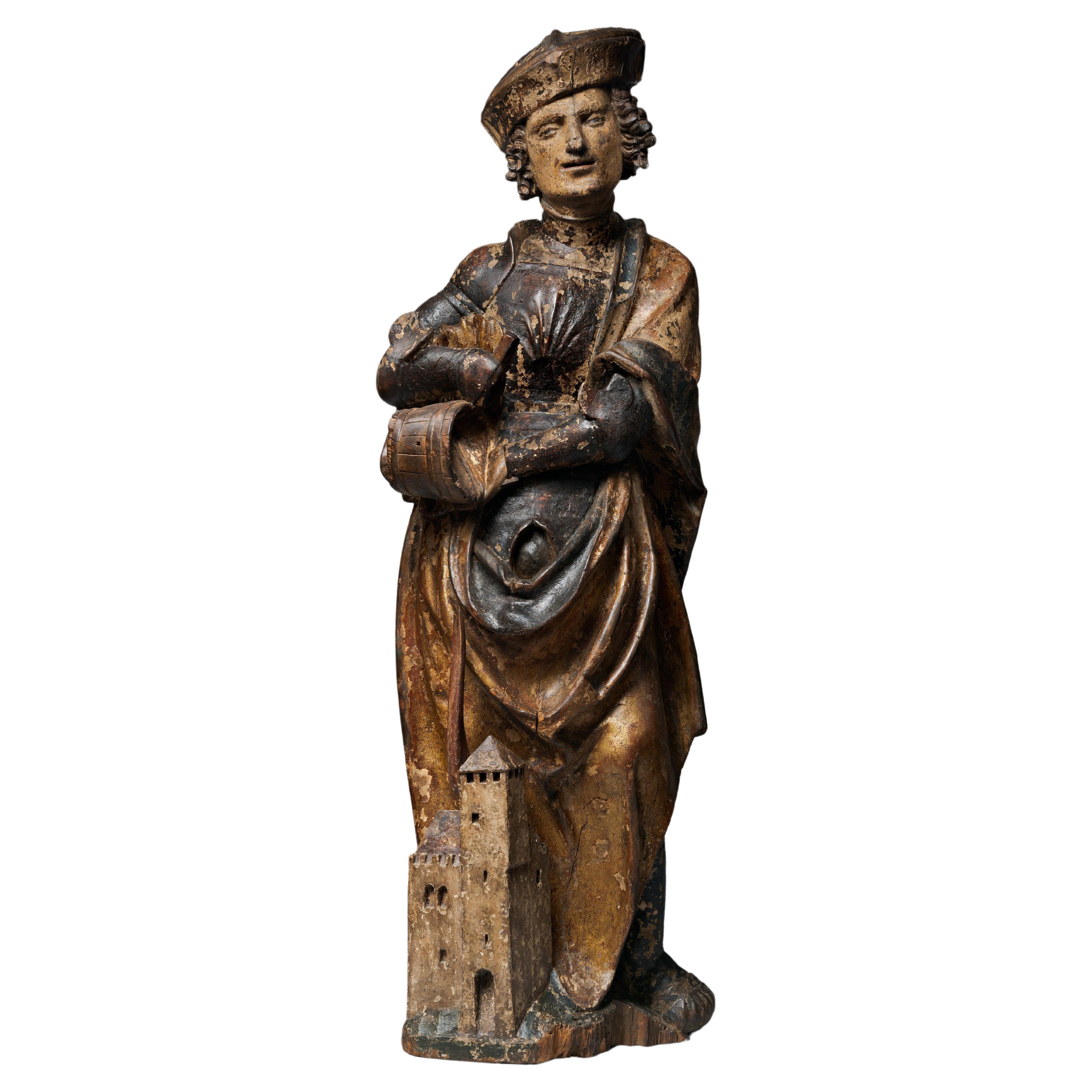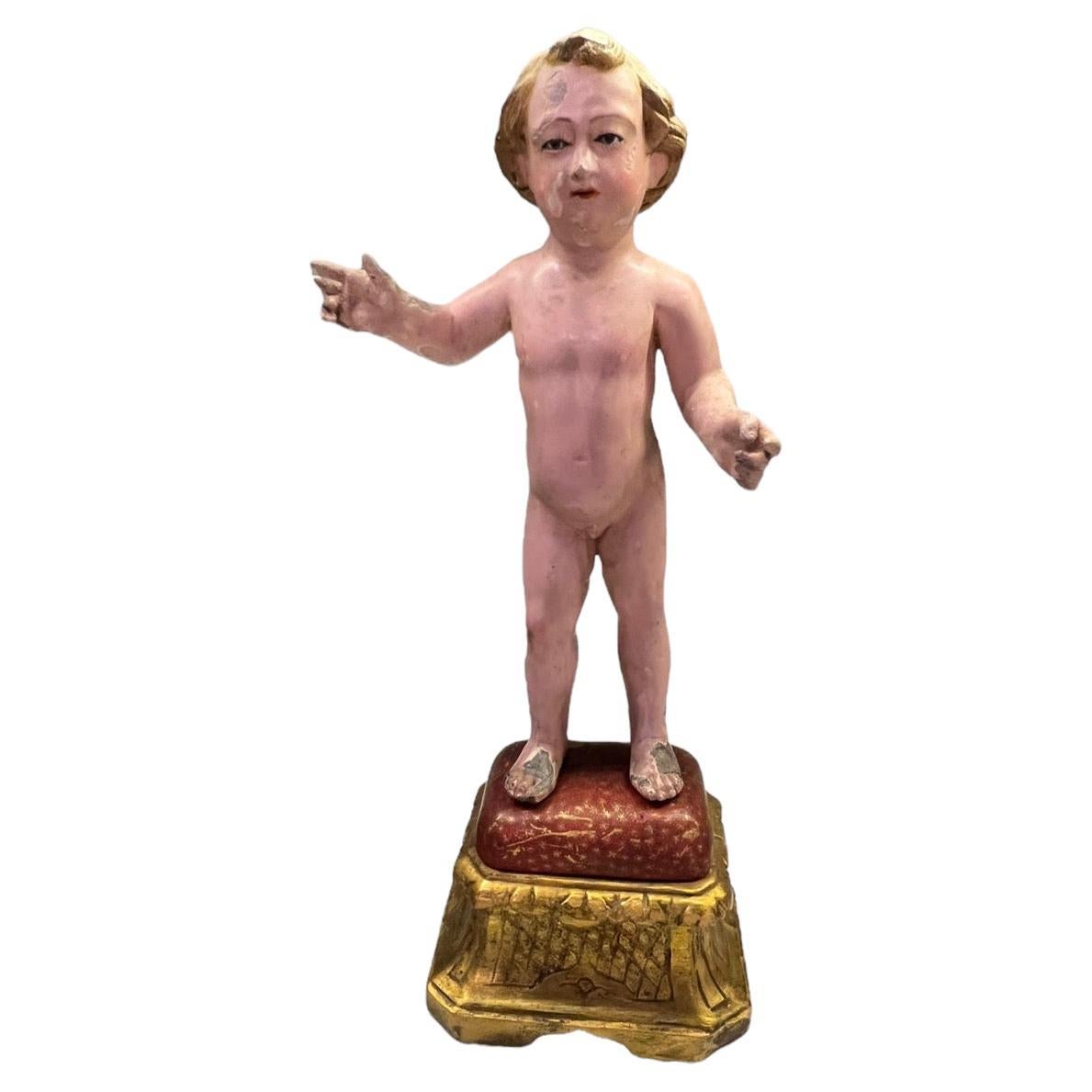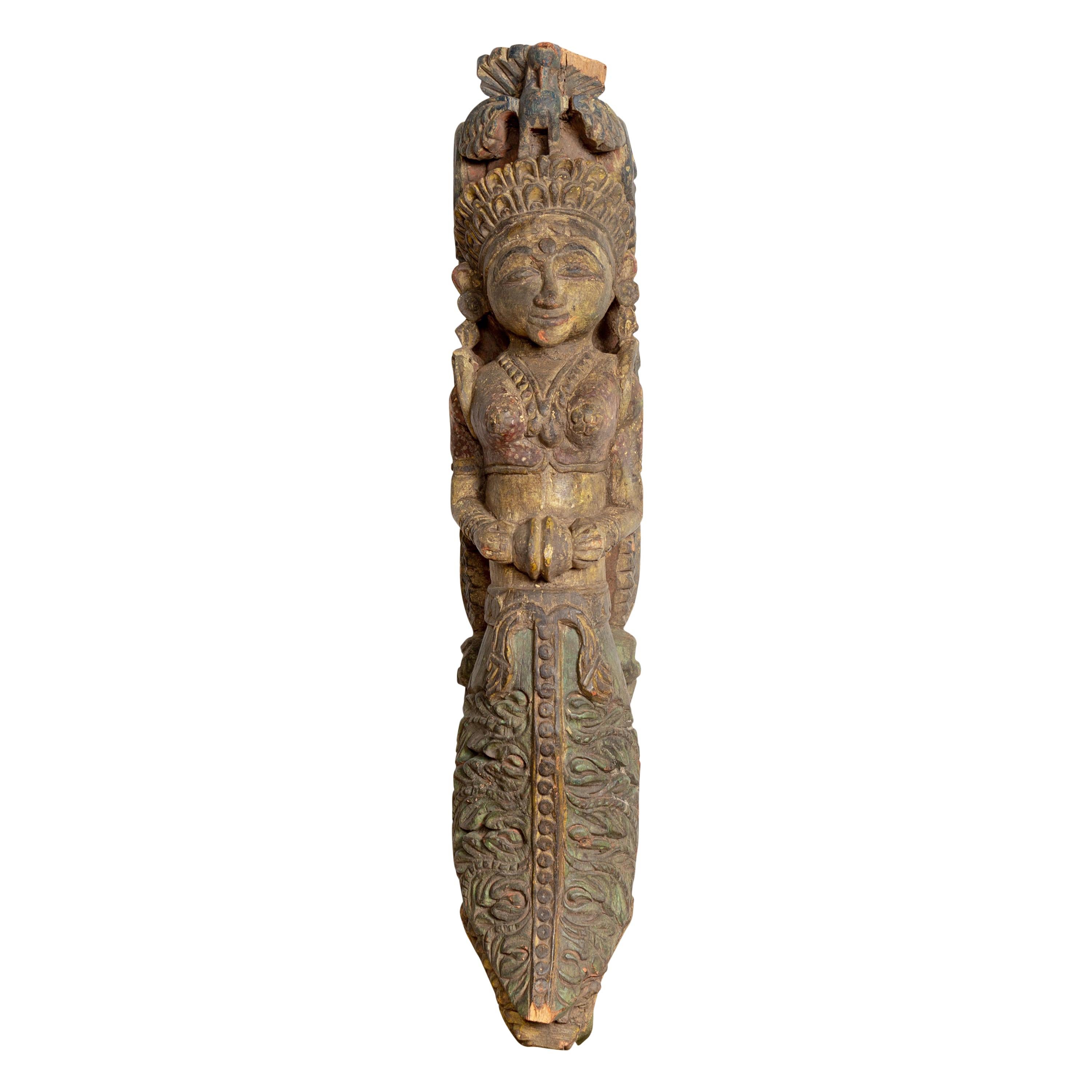Items Similar to Carved Polychrome Wood Depicting Saint Florian
Want more images or videos?
Request additional images or videos from the seller
1 of 5
Carved Polychrome Wood Depicting Saint Florian
About the Item
CARVED POLYCHROME WOOD DEPICTING SAINT FLORIAN
ORIGIN : SWABIA, SOUTHERN GERMANY
PERIOD : LATE 15th CENTURY
Height : 98 cm
Length : 29 cm
Depth : 24 cm
Polychrome limewood
Very fine condition
Provenance
- Swiss collection STAEHELIN-PARAVICINI - March 1939
- Auction Jacob Hecht -18 April 1929, Berlin
- Sammlung Prof Q.A. LEIMHAAS Munich, Helbing - 26 May 1908
(Research by Thierry Fraslin)
During the Middle-Age Saint Florian was particularly popular, subject to worship in Austria -Tyrol- Bavaria and Bohemia. Embodying courage and commitment Saint Florian was invoked to protect the soul of the living against sins and to keep the soul of the deads from the purgatory.
From the mid-15th century he safeguards from water and fire. The legend has it that when he was young the saint had contained the fire of a burning church with a simple jug of water and had saved a coal merchant from another fire.
This evolution within Saint Florian’s worship is also expressed in arts. For a long time the saint was depicted armoured, holding a sword and victorious over death. From the mid-15th century he is depicted holding a sword and watering a burning house with his jug or bucket of water.
Our sculpture belongs to this second iconographic type. Showing an elongated figure the saint is monoxyle, made from a unique limewood log. The sculpture is almost carved in the round with the back being hollowed out. The original polychromy is well preserved.
The legionary saint, standing, used to hold a bucket of water with which he sprinkled water over a burning house. In his left hand he is holding a spear. The smooth face of the juvenile saint is framed by curly shoulder-length hair.
Saint Florian wears on his shoulders a red and golden cloak over an armour. We can see the breastplate attached to the spaulders. The pieces of armour he wears on his right leg are also depicted with accuaracy.
The face of Saint Florian shows fine features. The semi closed eyelids are topped by eyebrows drown with a simple and precise black line. The gaze is heavy, expressing resignation or melancholy higlighted with a straight and petite mouth.
To the restrained face is opposed the cloak drapery carvings. The cloth is light, agitated and inflated by the wind deniying the material in which it was carved and bringing a realistic air to the sculpture.
This sculpture has to be linked, both because of its iconography and of its style, to the southern Germany production of the late 15th century. Indeed from 1475 to 1530 approximately southern Germany production is marked by a great creativity, becoming a very dynamic center. This art often described as « late gothic » is characterized by softness, restrained sensitivity and by the importance given to details and the drapes virtuosity.
The production was mostly wood carvings, and limewood was the speciality of this region. This wood is tender and light allowing a great freedom for the image carver and a beautiful polish. The sculpture, made of a unique wood log, was worked horizontally thanks to a wheel. We can see the marks of this wheel on the top of Saint Florian’s head. Some elements, more complex or difficult to reach was carved separately and fixed retrospectively to the main sculpture. That was the case for the water bucket of our sculpture. The image carvers often hollowed out the core of the log because when drying it could have caused dangerous cracks. It also participated in making the sculpture lighter.
As expressed by this depiction of Saint Florian, polichromy was a capital part of the making and was never neglicted. The use of gilded paint, typical of late Medieval period, higlight the preciosity of the sculptures. Here the polychromy gives a realistic dimension to the materials depicted as well as enhances his sanctity.
The costume’s details are characteristics of Swabian artists of the late 15th century such as Hans Multscher, active in Ulm between 1430 and 1467. His flourishing workshop influenced the following generations il all Swabia.
The martyr’s costume sharpens the dating. The armour is similar to archduke Sigismond of Tyrol’s exhibited in Vienna’s Kunsthistorisches Museum and dated from 1484. The armour’s style evolves separately from the early 16th century.
Thus, this Saint Florian was made by a talented image carver from a southern Germany’s workshop in the late 15th century.
Hagiography of Saint Florian
If we follow the story of the Passion of Saint Florian, the martyr would have taken place in 304. During those years many soldiers converted to christian faith were persecuted following orders from emperor Diocletian.
After having heard the imprisonment of forty christians in Lauriacum (today Lorch, Austria) Saint Florian went to prefect Aquilinus. He refused to recant his faith despite the prefect’s anger and violence. Aquilinus condemned Florian to be thrown into the Enns river with a heavy stone attached to his neck. When later on his dead body was washed up on the shore he was watched over by an eagle until he was burried by a pious widow named Valery.
On the presumed location of his tomb was erected in 1071 an augustinian convent – Sankt Florian city, 13km away from Linz- rebuild several times over the centuries. Inside the crypt is kept what is believed to be the heavy stone of his martyr. A pilgrimage soon occured.
The spreading of Saint Florian’s relics to Italy and Poland (of which country Saint Florian is the patron saint) allowed his worship to cross Austrian borders. However it is in Austria and southern Germany that his worship was the most significant.
Saint Florian was the first Austrian martyr and the first Austrian saint canonized.
Literature
Claude Lapaire, Sculpture sur bois du Moyen-âge, Genève : Musée d’art et d’histoire, 1986
Coll., Sculpture allemande de la fin du Moyen-âge dans les collections publiques françaises : 1400-1530, Musée du Louvre, 1991
Michael Baxandall, South German Sculpture, 1480-1530, Victoria and Albert Museum, 1974
Sophie Guillot de Suduiraut, Sculptures médiévales allemandes, conservation et restauration, La Documentation française, 1993
Sophie Guillot de Suduiraut, Dévotion et séduction, Sculptures souabes des musées de France vers 1460-1530, Somogy, 2015
- Dimensions:Height: 38.59 in (98 cm)Width: 11.42 in (29 cm)Depth: 9.45 in (24 cm)
- Materials and Techniques:
- Period:
- Date of Manufacture:Late 15th Century
- Condition:Minor fading.
- Seller Location:Saint-Ouen, FR
- Reference Number:1stDibs: LU3115336024812
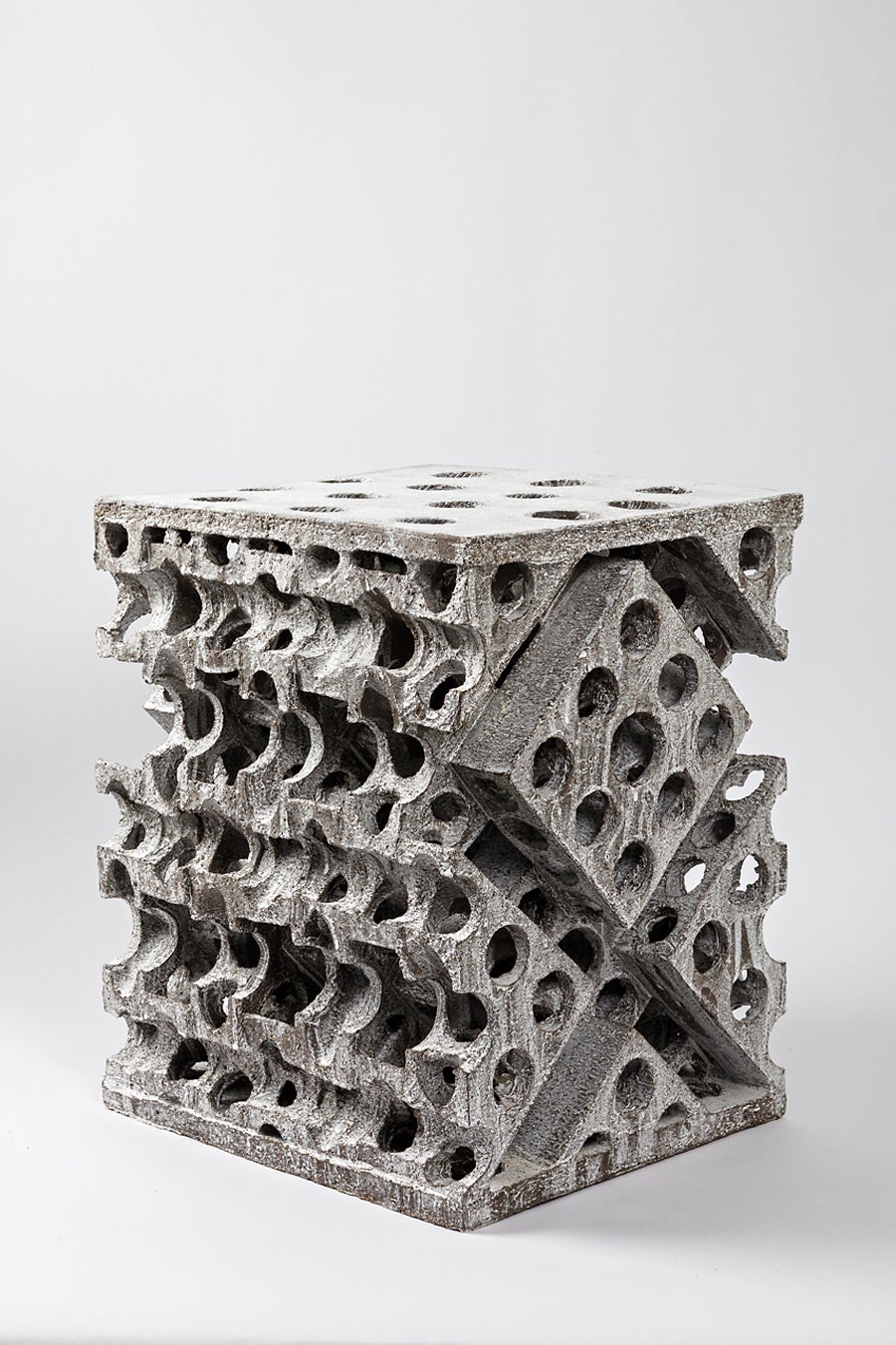
About the Seller
5.0
Vetted Seller
These experienced sellers undergo a comprehensive evaluation by our team of in-house experts.
Established in 2016
1stDibs seller since 2017
151 sales on 1stDibs
Typical response time: 7 hours
- ShippingRetrieving quote...Ships From: Paris, France
- Return PolicyThis item cannot be returned.
More From This SellerView All
- Carved Wood Depicting Saint MartinLocated in Saint-Ouen, FRCarved wood depicting saint martin Origin : Germany Period : 15th century Measure: Height : 85 cm Wood Polychrome remains Good state of conservation Collection number on the back 26757 Our partially polychromed Saint...Category
Antique 15th Century and Earlier Figurative Sculptures
MaterialsWood
- Saint Woman in polychrome carved woodLocated in Saint-Ouen, FRSAINT WOMAN IN POLYCHROME CARVED WOOD ORIGIN : ITALY PERIOD : late 13th century Height : 103 cm Length : 28 cm Width : 16 cm Remains of polychromy ...Category
Antique 15th Century and Earlier Italian Gothic Figurative Sculptures
MaterialsSoftwood
- 15th Century Carved Wood Depicting Saint JamesLocated in Saint-Ouen, FRThe Saint depicted here is Saint James the Great. James is the brother of St. John the Evangelist. Nothing is known of his activities after the Ascension...Category
Antique 15th Century and Earlier French Gothic Figurative Sculptures
MaterialsOak
- Saint FlorianLocated in Saint-Ouen, FRSAINT FLORIAN ORIGIN: SOUTH GERMANY, SWABIA PERIOD: END OF THE 15th CENTURY Height : 100,5 cm Width : 34 cm Depth : 17 cm Polychromed lime wood Good state of conservation Sin...Category
Antique 15th Century and Earlier German Gothic Figurative Sculptures
MaterialsWood
- Late 15th Century Polychrome Wood Carving Depicting the NativityLocated in Saint-Ouen, FRWhile the birth of Christ is briefly told in the Gospel of Luke (2, 7) it is in the apocryphal texts that we find most of the elements and details that have then inspired artists. As of the 14th century and even more of the 15th century the subject of the Adoration of the Child replaces in Western art the scene of the Birth, much favoured in Byzantine art. Instead of being depicted lying with the new-born swathed in the manger, the Virgin is now kneeling, her hands joined in prayer in front of the naked child. This change was probably hastened by the popularity of the visions of Saint Bridget of Sweden to whom the Virgin allegedly appeared to show how she had given birth to Jesus (Visions, VII, chap. 21). Sheltered by a thatch-roofed structure the Virgin is kneeling in front of the Child Jesus. She wears a magnificent red dress under a large gold cloak. Her curled blond hair is partially veiled. The newborn is lying on a straw mat. Joseph is depicted with a parted beard and stands opposite from the Virgin. He wears a tunic and a coat with a purse hanging from the belt. His costume reminds us of the long journey him and Mary have accomplished to reach Bethlehem. Two other women are present. One is looking through the stable’s window to observe the Holy Family while another one kneels in prayer in front of the divine child. The rich costume of the lady might indicate she is a donator. However they could also both represent the women who took part in the birth of Christ, Zelemi and Salome. Salome, incredulous did not believe in the virginal conception of Mary and she is represented far from the scene. The artist has depicted her with an expression of doubt on her face. Zelemi, on the contrary, is a believer. She is rewarded by a place of honour at the heart of the scene, close to Mary. To the left the donkey and ox that have accompanied Mary and Joseph to Bethlehem observe quietly the scene. On the foreground two angels hold a scroll reading an excerpt from the Gloria : “/Gloria/ in excelsis /Deo/.” One of the angels wears a blue cape while the other’s is red Those two colours are very significant as during Middle-Ages blue symbolises hope and red charity. Together they express the hope in redemption thanks to the advent of Christ and his sacrifice to come. Above the main scene, up a cliff, a small shepherd lets his herd of sheep graze amidst the trees. He is framed by two walled cities. This wood carving is the work of a very skilled and inventive artist. The piece bears witness to his exceptional talent. The realism of the scene is emphasised by the amount of details depicted. The refinement of the carving itself is highlighted by the well preserved polychromy. This key moment of the New Testament is set in a contemporary context thanks to the clothes of the characters and the scenes of rural life. The universal dimension of the scene is intensified while allowing contemporary viewers to grasp its meaning more easily. This care for details, the picturesque realism as well as the extraordinary rendition of the cloths suggest it was made by a Flemish artist during the late 15th century. This relief can be compared with the panel of the Nativity from the Saint-Vaast altarpiece made by Jacques Daret between 1433 and 1435, today in Madrid’s Thyssen-Bronemisza Museum. Literature Louis Réau, Iconographie de l’Art chrétien...Category
Antique 15th Century and Earlier Dutch Gothic Figurative Sculptures
MaterialsWood
- Carved Wood Depicting the Resurrection of ChristLocated in Saint-Ouen, FRCarved wood depicting the resurrection of Christ ORIGIN : SOUTHERN NETHERLANDS, ANTWERP PERIOD : EARLY 16th CENTURY Height : 67.5 cm Len...Category
Antique 16th Century Figurative Sculptures
MaterialsOak
You May Also Like
- 18th Century Italian Carved Wood and Polychromed Figure Depicting Baby JesusLocated in North Miami, FLPresenting an extraordinary 18th-century Italian carved wood and polychromed figure, capturing the tender image of baby Jesus in a standing posture, gracefully perched upon an intric...Category
Antique 18th Century Italian Rococo Figurative Sculptures
MaterialsGold Leaf
- Indian Antique Polychrome Hand Carved Statue Depicting a Celestial MusicianLocated in Yonkers, NYAn antique Indian polychrome and hand carved wooden sculpture from the early 20th century, depicting a celestial musician playing an instrument. This captivating wooden sculpture bea...Category
Early 20th Century Indian Sculptures and Carvings
MaterialsWood
- 17th C Polychromed Fruitwood Carved Statue Depicting Madonna, FranceLocated in Leuven , BEAn exceptionally beautiful antique French wood carving, made in the 17th century. It depicts Madonna standing with open offering arms .The...Category
Antique 17th Century Belgian Figurative Sculptures
MaterialsWood
- Saint Paul, Carved and Polychromed Wood. Spanish School, 16th CenturyLocated in Madrid, ESSpanish school of the sixteenth century. "Saint Paul". Carved and polychrome wood. Devotional image of a round piece carved in wood, polychrome and gilded, representing the Apostle ...Category
Antique 16th Century Spanish Renaissance Religious Items
MaterialsOther
- Large Polychrome Carved Wood Tang HorseLocated in Lambertville, NJSizable hand carved polychrome Chinese horse sculpture with detailed decoration.Category
Early 20th Century Tang Animal Sculptures
MaterialsPaint, Wood
- Carved Wood Polychrome Virgin Mary StatueLocated in New York, NYExquisite and compelling wood statue of the Virgin Mary with polychrome paint finish. Well executed, and finely carved we believe it's 19th C Continental, or possibly US in origin. U...Category
Antique 19th Century Spanish Folk Art Figurative Sculptures
MaterialsWood, Paint
Recently Viewed
View AllMore Ways To Browse
Carl Milles Statue
Copper Snail Sculpture
Dandy Watch
Drunk Monks
Egyptian Shabti
Georges Recipon
H Levasseur
Marianna von Allesch On Sale
Max Le Verrier Sculpture Spartiate
Roberto Nischli
Sabino Nude
Stone Head Sculture
Susanne Vertel
Terraco Draak
Thomas B Maracle
Tomasso Brothers
Toy Killjoy
Alfred Barye On Sale
